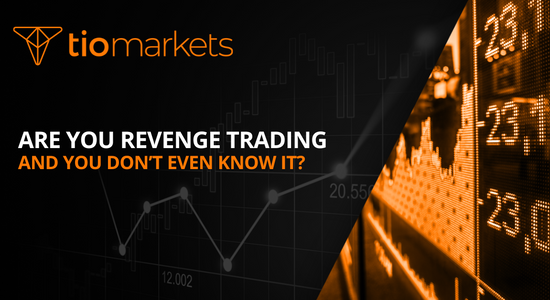How to Use Bollinger Bands in Momentum Trading?
BY TIO Staff
|Jun 20, 2024Momentum trading, a strategy that aims to capitalize on the continuance of existing market trends, requires precise tools for market analysis. Bollinger Bands, a versatile technical analysis tool, can significantly enhance a trader's ability to identify potential trading opportunities within this framework. This article delves into the mechanics of Bollinger Bands and their application in momentum trading, offering a comprehensive guide to both novice and experienced traders.
Understanding Bollinger Bands
Bollinger Bands are a technical analysis tool created by John Bollinger in the 1980s. They consist of three lines: the middle band, which is a simple moving average (SMA) of a security's price; and two outer bands, which are typically two standard deviations away from the SMA. This configuration provides a detailed view of the market's volatility and price levels.
Components of Bollinger Bands
The middle band of Bollinger Bands represents the trend's direction and is calculated over a specific period, typically 20 days. The upper and lower bands adjust themselves based on market volatility, expanding during periods of high volatility and contracting during times of low volatility. This dynamic nature makes Bollinger Bands particularly useful for momentum trading.
The distance between the upper and lower bands also offers insights into the strength of the market's momentum. Wide bands indicate strong momentum, while narrow bands suggest a weaker trend.
Significance in Momentum Trading
In momentum trading, identifying the right entry and exit points is crucial. Bollinger Bands help traders visualize these points by highlighting moments when the market is overextended. For instance, a price touching or breaching the upper band may indicate an overbought condition, suggesting a potential sell signal. Conversely, a price at or below the lower band might signal an oversold condition, indicating a buy opportunity.
Applying Bollinger Bands in Momentum Trading
Integrating Bollinger Bands into a momentum trading strategy involves observing the bands' behavior in relation to the price action. This section outlines practical steps and considerations for effectively using Bollinger Bands.
Identifying Market Trends
The first step in momentum trading with Bollinger Bands is to assess the market trend using the middle band. A rising middle band indicates an uptrend, while a declining middle band suggests a downtrend. Traders should align their trades with the direction of the trend for higher success rates.
It's also important to consider the slope of the middle band. A steeper slope implies a stronger trend, which can be a signal for traders to prepare for momentum trading opportunities.
Recognizing Trading Signals
Bollinger Bands provide clear signals for potential trades. A common strategy is to buy when the price moves back above the lower band after briefly touching it, indicating a potential reversal in an uptrend. Similarly, selling when the price falls below the upper band after a brief touch can capitalize on a reversing downtrend.
Traders can also use the bands to set stop-loss orders. For example, a stop-loss order can be placed just outside the lower band for a long position, providing a safety net against significant losses.
Combining with Other Indicators
While Bollinger Bands are powerful on their own, combining them with other technical indicators can enhance their effectiveness. Momentum indicators like the Relative Strength Index (RSI) or Moving Average Convergence Divergence (MACD) can confirm the signals provided by Bollinger Bands, offering a more robust trading strategy.
For instance, a trader might look for a situation where the price is at the lower Bollinger Band while the RSI shows an oversold condition. This combination can provide a strong buy signal in a momentum trading context.
Managing Risks with Bollinger Bands
Despite their utility, Bollinger Bands, like all trading tools, come with risks. Understanding these risks and how to mitigate them is crucial for successful momentum trading.
Over-reliance on Bollinger Bands
Traders should avoid relying solely on Bollinger Bands for their trading decisions. While they provide valuable market insights, they are not infallible. Incorporating other analysis methods and indicators ensures a more balanced and informed trading approach.
Volatility Spikes
Sudden spikes in volatility can lead to false signals from Bollinger Bands. Traders should be cautious during major news releases or market events, as these can lead to rapid expansions or contractions of the bands, potentially misleading traders.
Advanced Strategies with Bollinger Bands
For experienced traders looking to delve deeper into the world of Bollinger Bands, there are advanced strategies that can be employed to maximize trading opportunities. One such strategy involves combining Bollinger Bands with Fibonacci retracement levels to identify key support and resistance zones.
By overlaying Fibonacci levels on a chart displaying Bollinger Bands, traders can pinpoint areas where price is likely to reverse or consolidate. This convergence of technical analysis tools can provide a more comprehensive view of potential market movements, aiding traders in making informed decisions.
Utilizing Multiple Timeframes
Another advanced technique involves utilizing multiple timeframes when analyzing Bollinger Bands. By comparing the signals generated on different timeframes, traders can gain a more nuanced understanding of market dynamics and potential trading opportunities.
For example, a trader may use the daily chart to identify the overall trend using Bollinger Bands and then switch to a shorter timeframe, such as the hourly chart, to pinpoint precise entry and exit points based on intraday price movements.
Psychology of Trading with Bollinger Bands
Understanding the psychological aspects of trading with Bollinger Bands can also enhance a trader's performance. Emotions play a significant role in decision-making, and being aware of common psychological pitfalls can help traders maintain discipline and objectivity.
Emotional Discipline
When using Bollinger Bands in momentum trading, it's essential to remain disciplined and stick to a predefined trading plan. Emotional reactions to market fluctuations can lead to impulsive decisions that deviate from the established strategy, potentially resulting in losses.
Setting clear entry and exit rules based on Bollinger Bands signals and adhering to them can help traders avoid emotional trading and stay focused on their long-term goals.
Patience and Consistency
Successful trading with Bollinger Bands requires patience and consistency. Not every trade will be profitable, and fluctuations in the market are inevitable. By maintaining a consistent approach and trusting the signals provided by Bollinger Bands, traders can avoid making hasty decisions based on short-term market movements.
It's important to remember that trading is a marathon, not a sprint. Building a solid foundation of trading discipline and patience can lead to long-term success in momentum trading with Bollinger Bands.
Conclusion
Bollinger Bands are a powerful tool for momentum traders, offering insights into market trends, volatility, and potential trading signals. By understanding how to effectively use Bollinger Bands in conjunction with other indicators and risk management techniques, traders can enhance their trading strategies and increase their chances of success in the fast-paced world of momentum trading.
As with any trading strategy, it's important to practice discipline and conduct thorough market analysis before making any trades. Bollinger Bands, when used wisely, can be an invaluable asset in a trader's toolkit.
Start Momentum Trading with TIOmarkets
Ready to put Bollinger Bands to work in momentum trading? Join TIOmarkets, the top-rated forex broker, and access a world of trading opportunities across Forex, indices, stocks, commodities, and futures markets. With over 170,000 accounts opened in more than 170 countries, TIOmarkets offers a robust platform with low fees, over 300 instruments, and comprehensive educational resources to help you trade effectively. Take the first step towards enhancing your trading strategy—Create a Trading Account today and unlock your trading potential.

Risk Disclaimer - of Liability: The authors, publishers, and distributors of this article are not responsible for any losses, damages, or liabilities that may arise from the use of the information contained herein. Readers are encouraged to seek professional advice from a qualified financial advisor before engaging in any trading activities.
By accessing this article, you acknowledge and agree that you are fully responsible for your trading decisions and any resulting outcomes. Always conduct thorough research and consider your financial situation, risk tolerance, and investment objectives before making any trading decisions.
Join us on social media

Behind every blog post lies the combined experience of the people working at TIOmarkets. We are a team of dedicated industry professionals and financial markets enthusiasts committed to providing you with trading education and financial markets commentary. Our goal is to help empower you with the knowledge you need to trade in the markets effectively.
Related Posts
undefined



